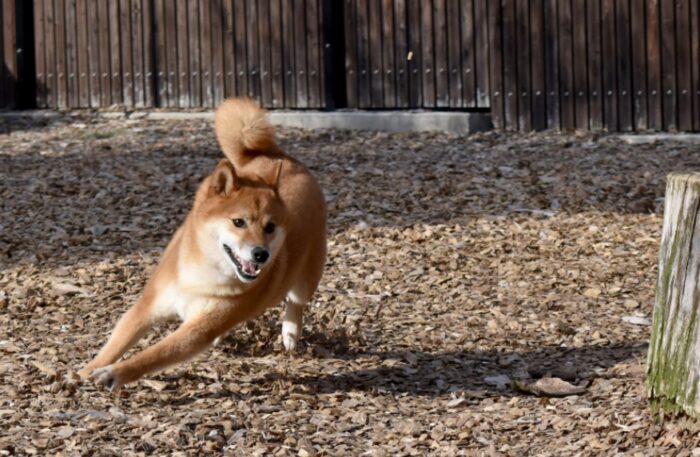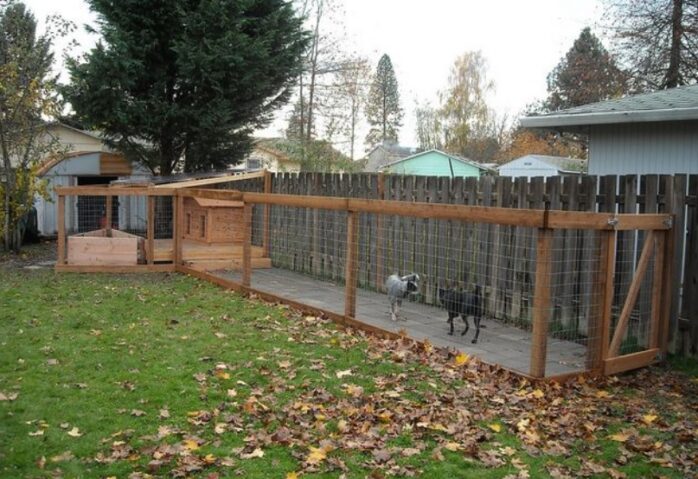
In our beautiful Ireland, we value health and wellness, for us and our four-legged friends. An essential part of canine wellness is outdoor exercise, embodied in the concept of dog runs. A dog run is a secure, fenced area for dogs to exercise and socialise freely. Outdoor play at dog runs not only promotes physical health but also encourages social interaction and mental stimulation, crucial to a dog’s holistic health. Regardless of breed, outdoor play in a dog run can enrich your dog’s life. Join InTheMarket as we explore more about the impact of dog runs on canine wellness.

Understanding Canine Wellness
Understanding canine wellness goes beyond merely ensuring our dogs are free from illness. True wellness is a multi-faceted concept, encompassing physical, mental, and social health. Like pieces of an intricate jigsaw, these aspects of wellness fit together to create the picture of a happy, healthy dog.
Physically, wellness can be evaluated through markers such as optimal weight, healthy coat, bright eyes, and good energy levels. Regular vet check-ups to monitor these signs and maintain timely vaccinations and preventative treatments also contribute to their physical well-being.
Mental health in dogs, though not as easily observable, is equally essential. A mentally healthy dog displays traits like curiosity, a willingness to engage, and the ability to adapt to new environments or situations. Stimulating activities and training can enhance cognitive function and stave off issues like anxiety and depression.
Social health encapsulates a dog’s ability to interact positively with both humans and other dogs. It’s about encouraging those tail-wagging encounters with their fellow canines at the park, and fostering strong, trusting bonds with their human families.
A key pillar that supports all facets of canine wellness is exercise and play. These activities serve as the engine that drives health and happiness in our dogs. Regular exercise and playtime keep your dog physically fit, reducing the risk of obesity and associated health problems. They stimulate the mind, providing both a mental challenge and an outlet for natural instincts and behaviours. Socially, playtime, particularly in a group setting like a dog run, allows dogs to learn and practice social skills, which are vital for their overall well-being.
In essence, exercise and play are not just about burning off energy. They’re an investment in your dog’s health, a routine that fosters physical fitness, sharpens the mind, and nurtures the social butterflies within our dogs. Through this understanding, we appreciate the profound role dog runs play in promoting canine wellness. As we delve further, we’ll explore these benefits in more detail and discover how we, as responsible pet parents, can make the most of them.
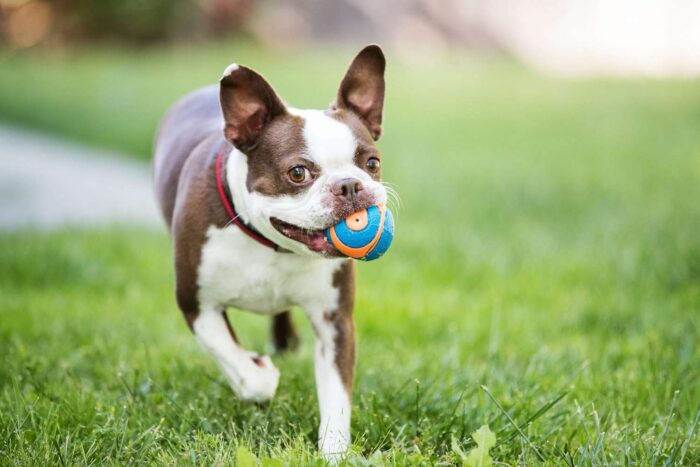
Physical Health Benefits of Outdoor Play in Dog Runs
In the dynamic world of a dog run, every bound, sprint and leap contributes to a dog’s physical health. Outdoor play is a vigorous form of exercise that engages various muscle groups and stimulates cardiovascular activity, thus playing a pivotal role in maintaining a robust canine physique.
Outdoor play facilitates weight control, a crucial aspect of a dog’s health. With obesity being a prevalent issue in dogs, causing conditions like diabetes, heart disease, and arthritis, regular exercise becomes paramount. Through active play in a dog run, dogs can burn off calories and maintain a healthy weight. Pair this with a balanced diet, and you’ve got a proactive strategy to keep those extra pounds at bay.
Muscle tone and strength are another direct result of these energetic outdoor activities. Every chase after a ball, every playful tumble with a fellow dog, contributes to your dog’s muscle development. These activities work various muscle groups and improve core strength, leading to better stability and agility. A dog with well-toned muscles is not only stronger but also less prone to injuries.
Outdoor play in dog runs also significantly enhances cardiovascular health. This heart-pumping exercise increases heart rate, improves blood circulation, and strengthens the heart muscles, much like our gym workouts do for us. Regular, cardiovascular exercise can help decrease the risk of heart disease and extend a dog’s lifespan.
Furthermore, these playful activities contribute to maintaining healthy joints and flexibility, particularly vital for ageing dogs. However, for additional support in maintaining your dog’s joint health, you can order joint supplements for dogs.
Mental and Emotional Health Benefits of Dog Runs
Beyond the physical, dog runs play a substantial role in promoting mental and emotional health in our canine companions. The exciting world of outdoor play not only keeps their tails wagging but also has a significant impact on their mood and mental well-being.
Have you ever noticed your dog’s euphoria after a good romp in the park? This isn’t a coincidence. Physical activity triggers the release of endorphins – nature’s ‘feel-good’ chemicals – in dogs, just like in humans. These neurotransmitters help to boost mood, reduce stress, and alleviate anxiety. For dogs prone to nervousness or those who exhibit signs of anxiety, regular trips to the dog run can be a useful part of their management routine, promoting relaxation and emotional balance.
Additionally, dog runs offer an environment rich with sensory stimulation. The plethora of sights, sounds, and smells – other dogs, new toys, diverse terrain – all these elements provide a veritable feast for a dog’s keen senses. This sensory enrichment can prevent boredom, increase alertness, and keep cognitive decline at bay, particularly in older dogs.
Furthermore, the interactive nature of play in a dog run can foster problem-solving skills. Whether it’s figuring out how to navigate an obstacle course or working out the best way to retrieve a toy, these playful activities exercise your dog’s brain as much as their body. This mental stimulation is essential to maintaining cognitive health and can contribute to delaying the onset of cognitive dysfunction syndrome in senior dogs.
Socialization Benefits of Play in Dog Runs
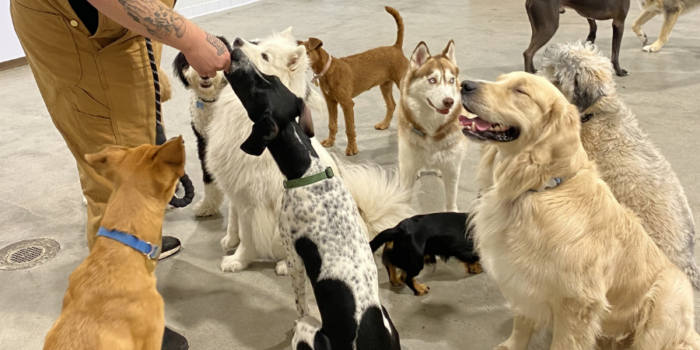
Dog runs are more than just exercise spaces; they are bustling hubs of canine social interaction. As our dogs gambol and frolic in these outdoor play areas, they’re also learning vital lessons in social etiquette, making them well-rounded members of both our human and animal communities.
Interacting with a diverse range of other dogs in a dog run offers a fertile environment for social learning. Puppies can pick up cues on appropriate dog-to-dog behaviour, while adult dogs can refine their social skills. These interactions help dogs learn how to communicate effectively, understand body language, respect boundaries, and build confidence.
Moreover, dog runs provide opportunities for dogs to interact with a variety of humans aside from their owners. This exposure to different people can help dogs become more comfortable around humans, reducing fear and anxiety, and encouraging positive interactions. For dogs who are less sociable, regular visits to dog runs, combined with positive reinforcement, can gradually help them overcome their inhibitions.
Socially well-adjusted dogs are not just happier and more confident, they are also more likely to create harmonious communities. A well-socialized dog is less likely to be fearful or aggressive towards other dogs and people, reducing the potential for conflict. These dogs contribute to creating an environment where people and pets can coexist peacefully, fostering a sense of community and mutual respect.
In a broader perspective, dog runs are instrumental in promoting responsible pet ownership. They provide a controlled environment where owners can monitor their dogs, learn more about their behaviour, and intervene if necessary. This awareness and understanding can foster empathy, responsibility, and a better human-dog relationship.
Thus, through their facilitation of socialization, dog runs do more than contribute to individual canine wellness. They play a part in shaping a community where dogs are not just tolerated but appreciated and understood, creating a healthier, happier environment for all. As we’ve seen throughout this exploration, the significance of dog runs goes beyond a space for exercise; they are integral to holistic canine health and wellness, nurturing our beloved companions’ bodies, minds, and social spirits.
Safety Tips for Outdoor Play in Dog Runs
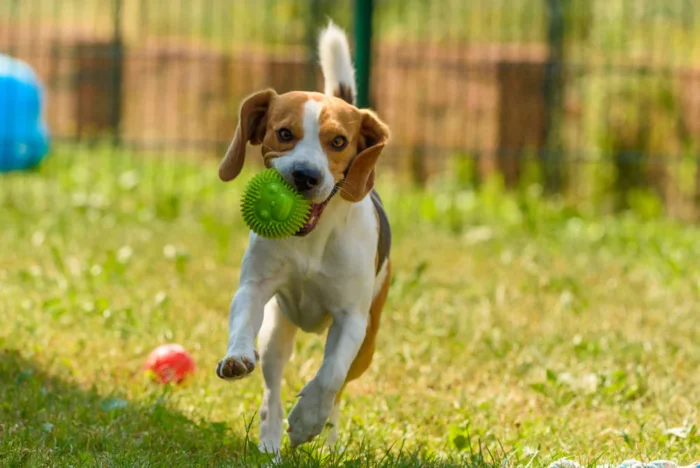
Ensuring safety in dog runs is paramount for a positive experience. Here are key considerations for creating and using a safe dog run:
- Proper Fencing: Fencing should be tall and secure to prevent dogs from jumping over or digging underneath. Use sturdy materials with no sharp edges or points.
- Dog-Friendly Equipment: Any equipment inside the dog run should be suitable for various dog sizes and breeds.
- Separate Play Areas: It’s advisable to have separate areas for large and small dogs to prevent accidental injuries during play.
- Shade and Water Supply: Ensure there is ample shade and a fresh water supply to prevent overheating, especially during warmer months.
- Safe Ground Surface: The ground surface should be non-abrasive and easy to clean. If using gravel or wood chips, ensure they are safe for dogs.
- Cleanliness: Keeping the dog run clean is essential in preventing the spread of parasites and diseases.
- Vigilant Supervision: Keep a close eye on your dog during play to intervene if necessary.
- Basic Commands: Teach your dog basic commands like “come”, “sit”, “stay”, or “leave it”. This training can be invaluable in a dog run environment.
While dog runs provide many benefits, remember that they should complement regular walks and one-on-one interaction, not replace them. By adhering to these safety tips, we can ensure our dogs have a fun and safe time during their outdoor play.
Tips for Encouraging Regular Use of Dog Runs
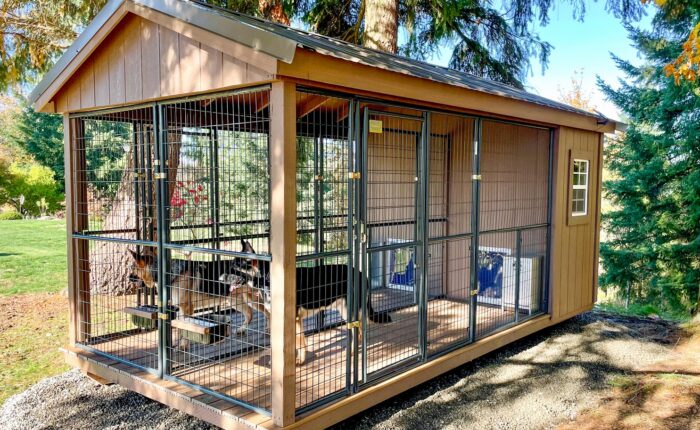
To make the most out of dog runs, here are some steps you can take:
- Establish a Routine: Visit the dog run at the same times each day, typically when your dog is most active, to build anticipation and familiarity.
- Start Slowly: If your dog is shy or unaccustomed to such spaces, start with visits during quieter times. Gradually increase the exposure as your dog’s confidence grows.
- Use Positive Reinforcement: Use treats, favourite toys, or praise to associate the dog run with rewards and positive experiences.
- Bring Toys: Interactive toys can enhance the fun factor in the dog run. However, respect other dogs and owners; not all dogs may want to share toys.
- Arrange Playdates: If your dog enjoys socialising, arrange playdates with their favourite doggie friends.
- Consider Professional Help: If your dog is less sociable, working with a professional dog trainer can help them feel more comfortable.
Remember, every dog is unique. Understanding your dog’s preferences and comfort levels is key to creating a positive dog run experience that contributes significantly to their overall wellness.
Conclusion
Dog runs, with their myriad benefits for our pets, offer a comprehensive approach to canine wellness. They improve physical health, enhance mental and emotional wellbeing, and promote social skills. These spaces provide a platform for varied exercises, keeping playtime fresh and engaging. By ensuring safety and establishing a routine, dog runs become a reliable wellness tool for our furry friends.
Incorporating dog runs into our pets’ lives can significantly enhance their happiness and health. As dog owners, it’s our responsibility to create these enriching experiences. So, utilise your backyard or local park and watch your dog thrive. Remember, a healthy dog is a happy dog, and a happy dog makes for a happier owner.

